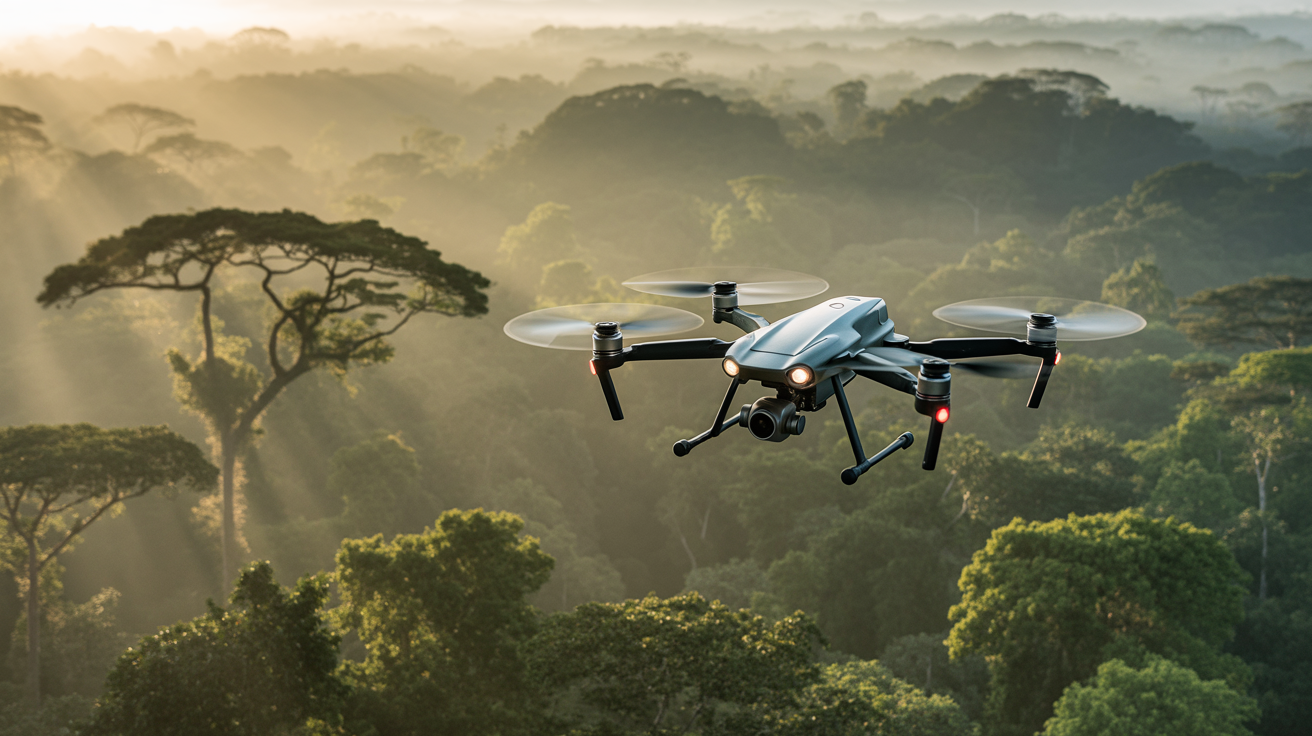AI-Powered Drones: The New Eyes in the Rainforest
Rainforests are home to an estimated 50% of the world’s terrestrial biodiversity, yet large portions remain unexplored due to their dense canopies, steep terrain, and remote locations. In recent years, a technological revolution has taken flight: AI-powered drones. These cutting-edge tools are enabling scientists to venture deeper than ever before, uncovering new animal species while also supporting conservation efforts.
Why Are Rainforests So Hard to Explore?
Rainforests are among the most biologically rich—and physically challenging—environments on Earth. Traditional fieldwork is often hindered by:
- Thick vegetation and towering canopies that block direct observation
- Muddy, uneven terrain and unpredictable weather
- The presence of potentially dangerous wildlife
- Remote locations far from human settlements
Because of these barriers, scientists estimate that millions of plant and animal species remain undiscovered, with the majority likely residing in rainforest habitats.
How Do AI Drones Work in Wildlife Discovery?
AI-powered drones combine advanced aerial technology with artificial intelligence to revolutionize wildlife research:
- High-Resolution Cameras: Capture detailed images and videos from above and beneath the forest canopy.
- Thermal Imaging: Detects warm-bodied animals hidden by dense foliage, even at night.
- Machine Learning Algorithms: Analyze thousands of images to identify animals, plants, and even unknown species based on distinctive patterns and shapes.
- Autonomous Navigation: Enables drones to map vast, unmapped territories and avoid obstacles without human intervention.
These features allow researchers to gather information at an unprecedented scale and speed, while minimizing disturbance to sensitive habitats.
Remarkable Discoveries: New Species Revealed
In the past decade, AI-powered drones have contributed to several exciting discoveries in rainforests around the world. For example:
- In the Amazon Basin, drones equipped with AI have aided in the identification of previously unknown frog and insect species by capturing high-resolution images of canopy life.
- In Southeast Asia, thermal imaging from drones helped researchers spot rare nocturnal mammals like the Sunda colugo, and even hinted at the presence of new mammal species.
- In Central Africa, drones mapped remote swamps, revealing populations of elusive birds and primates previously undocumented by science.
"We’re seeing things we never could before—and finding species we didn’t even know existed," says Dr. Maya Hartwell, a leading conservation biologist.
Conservation Benefits and Ethical Considerations
Aside from discovering new species, AI-powered drones offer crucial benefits for conservation:
- Monitoring endangered animals with minimal disturbance
- Tracking illegal logging and poaching activities
- Assessing forest health and habitat changes due to climate change
However, ethical considerations remain important. Researchers must ensure that drone flights do not stress animals or violate protected area regulations. Data privacy and local community involvement are also key factors for responsible use.
The Future: Expanding Our Understanding of Life on Earth
As AI-powered drones become more affordable and advanced, their role in wildlife discovery is only set to grow. Scientists hope to combine drone data with genetic analysis (e.g., environmental DNA collected from leaf litter or water) for even more accurate species identification.
Every new discovery not only expands the tree of life, but also highlights the urgency of protecting fragile ecosystems. Rainforests are disappearing at an alarming rate; the creatures we find today may vanish tomorrow unless conservation keeps pace with discovery.
Fascinating Facts: AI Drones in Action
- One drone flight can survey up to 50 hectares in a single day—much faster than ground teams.
- AI algorithms can process and analyze tens of thousands of images in hours, flagging unusual patterns that may indicate new species.
- In some projects, drones have reduced the cost of rainforest surveys by over 60% compared to traditional methods.
Conclusion: A New Era of Wildlife Discovery
AI-powered drones are revolutionizing the way we explore and understand rainforests. By uncovering new animal species and providing vital data for conservation, these innovative tools are helping to safeguard our planet’s most precious—and mysterious—ecosystems. The age of discovery is far from over; with technology as our guide, the next great species could be just a drone flight away.


